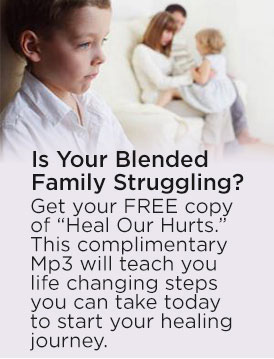by admin | Jul 9, 2015 | Uncategorized
Hot shot kid in a too-fast car cut you off this morning; it’s noon and you’re still seething?
Clerk at the grocery store wouldn’t let you in his express line because the guy behind you ratted on your 11th item?
Husband had an affair 15 years ago and even though you’ve been divorced for seven, your stomach still knots up when you think about it?
You moved to a new city for a great career opportunity but long so much for your old home and your old friends that you can’t find anything to like about the new place?
Your son stays home to care for the kids while your daughter-in-law works at her law practice and this just doesn’t seem right to you?
You know you should let it all go, and you try, but there it is—that same old stuff still getting rent-free space in your head.
Just exactly how does one let go, so that the residue of the past is put away, forgotten, or transformed into memories that can be called upon at will, rather than those that show up like telephone solicitors at dinnertime and demand attention?
Letting go has to do with living in the present moment rather than the past. It happens when the past isn’t projected into the future, but is left behind where it belongs. It’s about making amends when called for, taking care of things that need attending to, forgiving rather than re-living. It has to do with receiving God’s unconditional love as the answer to our deepest emotional needs. The Center for Family Unity offers Christian counseling with a firm foundation to help you grow and change.

Try this:
- Next time a thought about something that happened in the past floats into your mind, let it pass through without jumping aboard and going along for the ride. If you focus on it, the thought will grow into an obsession. Try acknowledging the thought, then, with a deep breath, letting it go into the hands of God.
- If the thought that comes along is about something that’s left undone, you may need to take some action before you can let go. Do you need to make amends with someone, clear up some misunderstanding, write a letter or make a phone call? Perhaps you need to make a list of the actions needed to resolve a situation, and set some goals. Begin with a small, manageable step, but, whatever you must do, begin. Taking action sometimes precedes letting go.
- Stay in the now and appreciate the circumstances of your life. Make a gratitude list of what you like about wherever you are; not just your living arrangements, but other parts of your life, too. Get rid of what is no longer appropriate in your life, and create more space for more of the gifts that God has given you to show up.
- Write letters that you may or may not send to people you need to release. (Caution: always wait a few days and check with someone you trust if you have any doubts about the appropriateness of actually sending a letter.) Write unsent letters to situations from your past or to people, even those who have passed away. Write what you feel, say what you need, and say goodbye.
- Let go by putting away pictures, memorabilia, clothes, gifts and anything else that keeps you actively connected with someone who’s no longer with you and whose presence you keep alive when it would be more beneficial to move on.
- Make a ceremony of letting go. Burn old letters or journals. Dig a hole in the earth and bury what needs to be buried. Write a letter or vow for the occasion, read it aloud. Light candles, sing songs. And weep, if need be. Include others in your ceremony to witness or assist you.
- Let go of old ideas. People, lifestyles and cultures change. Talk to others, get other perspectives. Focus on what’s good about change, find the ways it benefits you and others. Holding on to how it used to be keeps you from participating in the present.
- Release thoughts and words that categorize people, that measure or evaluate or that judge or condemn or hold others with expectations. Eliminate words like should, ought, can’t, if only, however and impossible.
The authors of Love is a Choice: The Definitive Book on Letting Go of Unhealthy Relationships show us the important stage of seeing God’s unconditional love as the answer to your deepest emotional needs and your hunger for love.
For more information on letting go of the past or for help processing through painful memories, contact The Center For Family Unity in San Diego. Call us at (619)884-0601 or visit www.TheCenterForFamilyUnity.com
by admin | Jun 15, 2015 | Blended Families, Family Counseling
Studies show that blended families move through a number of stages over several years
During these stages, negotiations are made regarding the ‘how’, ‘when’ and ‘why’ of daily routines and family traditions. A process is formed to resolve issues and a sense of unity within the new family is built.
By the final stage a stepparent no longer feels like the ‘outsider’. They have a clear role and purpose within their family and comfortable step relationships are evident.
Does this mean there is one right way to blended family success? Therapists at the San Diego based Center for Family Unity, have a step-by-step program to help you form a unified step-family.

Stepparents may play a more or less active role in discipline depending on the willingness of both their partner and stepchildren. The level of bonding between stepparents and children may also vary. The common factor is a strong couple relationship in which both partners feels their needs are catered for and a system is in place for negotiating the way forward.
The thing is, it takes time for each person to adjust to their new role within your family. The stages show us that blended family dynamics do change over time. With patience, persistence and some proven strategies to assist, family members will form a way of relating to each other that helps each person feel accepted, supported and a sense of belonging.
Keys to blending successfully
• Couples who share their feelings without blaming and explore possible solutions that cater for a variety of needs, will mostly like work through the stages of blending at a faster pace.
• Don’t set rules and systems in concrete but evaluate them to determine their effectiveness. If one approach doesn’t work, it’s not the end of the world (or the stepfamily), together explore another way forward.
• Develop effective conflict resolving skills these will directly affect your success over time.
Unfortunately many couples give up before ever experiencing unity. Don’t become one of the statistics. Achieve a San Diego marriage success rate that goes against the stream of disappointing failed 2nd and 3rd marriages!
If you’re experiencing a lot of conflict, it doesn’t need to be this way forever. Recognize conflict is a normal part of the process and use the skills and strategies in the Healing Our Hurts Program at The Center for Family Unity to make your journey smoother. Call 619-884-0601 for help.
by admin | Jun 15, 2015 | Children Therapy
Losing a pet can impact the entire family, but it can be particularly traumatic for children because it’s usually their first encounter with loss and death. As parents, we can feel overwhelmed and helpless knowing we cannot shield our kids from the painful reality of death. Although we can’t stop our kids from having a broken heart, there are things we can do to make their bereavement process healthy and manageable.
The first step in helping kids learn how to cope with the loss of a pet is to be honest with them. As difficult as this may feel, it’s important to tell them the truth. Stay away from half -truths and euphemistic descriptions about death. Instead, sensitively explain to your child that his or her pet has died. A child’s understanding about death will vary based on his age.

What To Expect
According to the Association for Pet Loss and Bereavement, kids between the ages of 7 and 9 tend to have the most questions about death. If your child asks you what happens after death, you can explain your understanding about life after death, but it’s also okay to admit that you’re not entirely sure.
This loss can also trigger a child’s fears that you or other people he or she loves will die. Remember to be patient and try to address these fears as they come up. For example, if your child asks you if you’re going to die and leave them too, you can say something like, “Most people die when they are very old, and I don’t plan to leave this earth for a very long time.”
The second step is to honor your child’s feelings. Help your child to express his or her grief. You can encourage your children to make drawings or write stories about their pet. It’s also very helpful to have them recall happy memories, which allows them to both grieve and remember happier times with their pet.
Kids may need to cry and express their feelings of loss, which is to be expected. They might also struggle with other complex emotions like anger, denial and guilt. Encourage your child to talk with you about his or her feelings. This will allow you to explain that what they are experiencing is normal and a natural part of the grieving process. Ultimately, parents want to help their children move through their feelings of depression and eventually come to a place of acceptance.
How To Begin The Healing Process
One of the ways to encourage your child’s healthy acceptance of a pet’s death is to find a way to memorialize this passing. Having a burial, memorial or similar type of ceremony helps to reinforce the importance of the pet’s life while also marking its death. This can be done in many different ways. Kids should be allowed to participate in whatever way feels right for them. Maybe it’s marking the gravesite, making a garden stone with the pet’s name on it, planting a tree in remembrance of the pet, or designing a collage of the pet’s photos and placing it in a frame.
Managing loss and death is ironically one of the most difficult aspects of life. But if handled correctly, the loss of a family pet can be a valuable opportunity to teach an important, yet tough life lesson about how to deal with loss in an open and healthy way.
When your children receive counseling from a Licensed Marriage Therapist in San Diego at The Center for Family Unity they can learn healthy ways to cope with loss and death. To make an appointment, call us at 619-884-0601.
(Resources: Remembering My Pet: A Kid’s Own Spiritual Remembering Workbook By Molly Phinney Baskette & Nechama Liss-Levinson and Someone I Love Died by Christine Harder Tangvald and Dog Heaven by Cynthia Rylant)
by admin | Jun 15, 2015 | Divorce Care
After divorce, it can be tempting to stay stuck in your yuck. Sometimes, repeating the same stories over and over again and staying emotionally broken feels easier than doing the hard work of moving on. But it’s not. The truth is that if you continue re-living and clinging to what is no longer your reality, you won’t be able to open the door to the next chapter in your life. There will be better, brighter days ahead – if you create space in your life for them. There are new friendships to be made, new relationships to enjoy, career options that can delight you and fulfilling activities that can help you rediscover your joy. Your job is to purpose to look for them—expectantly. You can create amazing life experiences when you rely on God’s peace, power and direction.
Select Friends and Companions Carefully
We can’t easily change other people, but we can change the people we associate with. If your social group isn’t supportive of you, or if it tends to wallow in self-pity, realize you have a choice in your life about who you spend time with. Choose to socialize with introspective, loving people who accept responsibility for their own behavior and proactively move ahead in transforming their lives. It is said that you become like the five people you spend the most time with, so choose your circle carefully. Move out of the blame game and surround yourself with positive people with high self-esteem who can appreciate you—with all your assets and baggage—as the wonderful person you are. You may find these people where you least expect them, so step out of your comfort zone and be receptive to new friends and new experiences in new places.
 Allow Change into Your Life
Allow Change into Your Life
Life is always filled with changes, not just during divorce. Get comfortable with the fact that there are more unknowns ahead and that change is inevitable. While dark periods are tough to handle, realize this too will pass. There will be better days and new relationships. Listen to your self-talk. Let go of the limiting beliefs you have about yourself. When you catch yourself in doubt, fear or put-down language, become aware of that message and consciously refute it. Take your thoughts captive! Determine what you want to change about yourself from within and relax about controlling circumstances around you. When you come to accept the reality of changes in your life, you’ll feel more at peace with yourself and those around you.
Life is about choices and decisions. Use your divorce as a catalyst for positive change. Choose to be the person God wants you to become. Then watch how circumstances around you settle into place more harmoniously than you ever expected.
Receiving counseling from a Licensed Marriage Therapist in San Diego at The Center for Family Unity can help you move on from painful memories and loss from the past. To make an appointment, call us at 619-884-0601.
by admin | Jun 15, 2015 | Children Therapy

Are you worried about the fact your child still wets the bed? Have you reached the end of your patience with nightly upsets due to a cold, urine soaked bed? Has bedwetting caused your child to avoid spending overnights with peers? Has your child’s bedwetting caused you to feel like a failure as a parent?
Bedwetting is a fairly common symptom. Here are some facts the American Academy of Child and Adolescent Psychiatry (AACAP) wants parents to know about bedwetting.
- Approximately 15 percent of children wet the bed after the age of three
- Many more boys than girls wet their beds
- Bedwetting runs in families
- Usually bedwetting stops by puberty
- Most bedwetters do not have emotional problems
- Children rarely wet the bed on purpose
The National Sleep Foundation and the Children’s Hospital of Boston estimate that 13-20% of 5-year-old children, 10% of 7-year-old children, and 5% of 10-year-old children still wet the bed. Between five and seven million children in the United States wet their beds on a regular basis, which accounts for around 10% of the country’s population of children. You are not the only parents dealing with bedwetting. There are most likely other children in your child’s classroom and neighborhood that are dealing with bedwetting.
To help your child stop wetting the bed, the AACAP suggests:
- Limiting liquids before bedtime
- Encouraging the child to go to the bathroom before bedtime
- Praising the child on dry mornings
- Avoiding punishments
- Making sure your child knows it is not their fault
- Waking the child during the night to empty their bladder
- Having the child wear pull ups at night
Most children begin to stay dry at night around the age of 3 to 4 years of age. The actual age at which a child masters staying dry at night is dependent on the child’s bladder control. As children grow, they become more aware of the sensation of a full bladder. When there is a delay in this development, it can cause bedwetting. If your pediatrician does not ask you about bedwetting, be sure to bring the subject up yourself. The physician can determine if there is a medical cause.
There are many things that can cause a child to start wetting the bed again after having mastered the ability to stay dry during the night. The pediatrician can determine if there is a medical reason, such as a urinary tract infection, or diabetes. This regression can also occur when the child experiences a major change in their life which causes them to be fearful and insecure. Major changes include parents divorcing, moving to a new school, the loss of a loved one, and the presence of a new baby or step parent in the family. Most children are ashamed and embarrassed by their bedwetting. If there are other children in the household, it is important to establish a “No teasing” rule about bedwetting and enforce it.

Making the bed in the following manner is very helpful, no matter what is causing the bedwetting: Put a plastic sheet over the mattress, then a regular sheet, and top that with a blanket. Repeat the process, so there are two layers of the fully made bed. This will make it easier to quickly get the child into a dry bed in the middle of the night. Some parents prefer to use disposable pads in the bed. It is advisable to have a moisture proof case for bed pillows, especially if your child is a restless sleeper. Keep fresh pajamas handy. Work out a simple routine with your spouse to establish who gets up at night, and who washes the bed clothes and remakes the bed.
Early supportive measures by the family can be very helpful, especially when the parents express their confidence that the child will be able to master bladder control. The child should never be punished for bedwetting. Be sure to praise the child for mastering other developmental milestones, skills, and good behaviors. Let your child know you are confident in their ability to master bladder control. Develop the ability to listen to their thoughts and feelings about bedwetting. Stand firm in your belief that they will triumph in the end.
Make an appointment to see a counselor if there are signs your child is having difficulty coping because of embarrassment over wetting the bed, or if you see possible emotional problems, following major life changes. Speak with a counselor when you feel discouraged as a parent, and are losing patience with the situation. The counselors at The Center for Family Unity can be of assistance in evaluating your child, and working to resolve emotional issues that may contribute to poor bladder control. Parents can also benefit by being freed from the belief that they have failed as a parent, and the guilt that accompanies this false belief. Call for a free phone consultation today at 619-884-0601.














